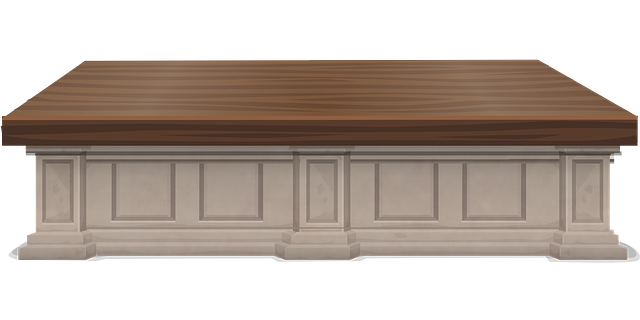In today's rental market, landlords can maximize returns by investing in a low-maintenance kitchen design. This strategy caters to tenant preferences for modern, easy-to-manage spaces, boosting occupancy rates and income. By choosing durable materials like stainless steel, quartz, and ceramic tile, landlords reduce maintenance costs while increasing property value. Such upgrades attract a wider tenant pool, ensuring long-term profitability and a competitive edge in the market.
In the competitive rental market, balancing upgrades to meet Return on Investment (ROI) expectations is crucial. This article guides landlords through strategic decisions, focusing on the impact of ROI on rental choices and exploring cost-effective solutions. We delve into the benefits of low-maintenance kitchen designs, offering both practical and aesthetically pleasing options. By prioritizing upgrades based on ROI, you can future-proof your property while maximizing its appeal to tenants, ensuring a steady stream of rental income.
Understanding ROI and Its Impact on Rental Decisions
In the property rental landscape, understanding Return on Investment (ROI) is paramount for landlords aiming to maximize returns. ROI acts as a compass, guiding decisions on whether to upgrade or maintain existing units. For instance, investing in a low-maintenance kitchen design can significantly impact tenant satisfaction and retention, leading to higher occupancy rates. This, in turn, boosts rental income and justifies the initial expenditure.
Tenants often seek spaces that require minimal upkeep, aligning with the growing trend of efficient and durable kitchen designs. By embracing these trends, landlords not only attract a broader range of tenants but also future-proof their properties. Consequently, the ROI from such upgrades can be substantial, ensuring long-term profitability and competitive edge in the rental market.
The Role of Low-Maintenance Kitchen Design in Achieving Balance
In today’s competitive rental market, balancing upgrades to meet ROI expectations for rental income requires strategic decisions. One key area where landlords can achieve this balance is through adopting a low-maintenance kitchen design. By choosing durable, easy-to-clean materials and sleek, modern appliances, landlords can enhance the appeal of their properties while minimizing ongoing maintenance costs. This approach not only boosts the overall value of the unit but also ensures that tenants enjoy a functional, efficient kitchen without constant upkeep.
Low-maintenance kitchen design promotes a harmonious blend of aesthetics and practicality. Incorporating features like stainless steel appliances, quartz countertops, and ceramic tile flooring reduces the risk of damage or dilution over time. Such designs also cater to tenants’ desires for modern amenities, making properties more marketable and potentially increasing rental income. This strategic upgrade path allows landlords to achieve a delicate equilibrium between investment and ROI, ensuring that their properties remain competitive while minimizing hassle.
Strategies for Prioritizing Upgrades Based on ROI
When prioritizing upgrades for maximum return on investment (ROI) in rental properties, focus on high-impact areas that offer both aesthetic appeal and functional benefits. Kitchens, for instance, are a strategic target due to their central role in property value and tenant satisfaction. Implementing a low-maintenance kitchen design can significantly enhance ROI. Opt for durable materials, efficient appliances, and streamlined layouts to reduce maintenance costs over time.
Consider the rental market trends and tenant preferences. Modern, functional kitchens with smart features are often sought after by renters. Upgrading to energy-efficient fixtures, integrated appliance packages, or even a built-in coffee station can attract tenants and command higher rental rates. Balancing these improvements with other essential upgrades ensures that your investment in each property aligns with current market demands, ultimately driving strong ROI.
Cost-Effective Materials and Designs to Consider
When balancing upgrades for rental income, landlords should consider cost-effective materials and designs that offer both durability and aesthetic appeal. For kitchens, opting for low-maintenance surfaces like quartz countertops, stainless steel appliances, and ceramic tiles can significantly reduce long-term maintenance costs. These materials are not only easy to clean but also resistant to scratches, stains, and water damage, ensuring they stay looking fresh longer.
In terms of design, a low-maintenance kitchen should prioritize functionality and simplicity. Open floor plans with ample storage solutions, such as overhead cabinets and pull-out drawers, can enhance the space’s practicality while reducing the need for frequent reorganizing. Additionally, incorporating energy-efficient fixtures and appliances—like LED lighting and high-efficiency refrigerators—can lower utility expenses, making these upgrades a smart investment in the long run.
Long-Term Benefits and Future Proofing Your Rental Property
Investing in thoughtful upgrades, especially to high-use areas like the kitchen, offers long-term benefits for rental properties. A well-designed, low-maintenance kitchen can significantly enhance tenant satisfaction and retention. It also positions your property as modern and desirable, attracting higher-quality tenants willing to pay premium rents. This strategy future-proofs your asset, ensuring it remains competitive in a dynamic market.
By opting for efficient appliances, durable materials, and smart technology, you create a space that’s not only aesthetically pleasing but also practical and cost-effective for both tenants and landlords. These upgrades can contribute to reduced turnover rates, fewer maintenance calls, and overall improved cash flow—all while ensuring your rental property keeps pace with evolving trends and consumer expectations.
In balancing upgrades to meet ROI expectations for rental income, a strategic approach is key. By understanding the impact of ROI on rental decisions, incorporating low-maintenance kitchen design principles, prioritizing upgrades based on ROI potential, and considering cost-effective materials and designs, landlords can make informed choices that not only enhance property value but also attract and retain tenants. These strategies ensure long-term benefits and future-proof your rental property, making it a competitive and lucrative investment.
